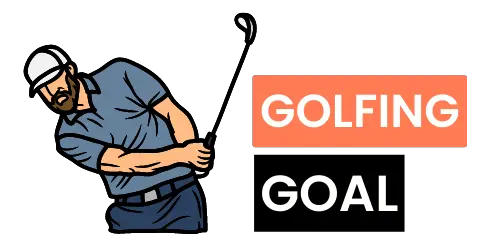
Golf cart backfires can turn a peaceful ride into a startling experience. Understanding why your golf cart backfires is crucial for every golf enthusiast.
Often, it’s a simple issue like an improperly closing throttle or an imbalance in the air-to-fuel ratio. Sometimes, it’s more complex, involving spark plug troubles or exhaust system glitches.
This intro will guide you through the common causes of golf cart backfires, offering insights and solutions to keep your ride smooth and enjoyable. 🏌️♂️🔧🛺
Root Causes of Golf Cart Backfires (A Detailed Analysis)
1. Throttle Plate Issues
If the throttle plate isn’t closing properly, it’s a red flag. This can happen if the accelerator cables are not adjusted correctly, causing the throttle to open or close improperly.
This can disrupt the fuel-air mixture balance causing a faster fuel burn and leading to backfires
2. Fuel Mixture Imbalance
Too rich a fuel mix can cause backfires. In 4-cycle engines, this might be due to incorrect settings on the carburetor’s plastic cap limiter.
For 2-cycle engines, it’s about the screw adjustment on the carburetor.
3. Incorrect Timing Settings

Just like in cars, incorrect ignition timing can cause backfires in golf carts. If the spark plug fires at the wrong time, unburned fuel can ignite in the exhaust system, leading to a backfire.
4. Carbon Buildup
This can occur on the piston or valves and is a less common but possible cause. The buildup can get red hot and ignite the fuel without the spark plug, leading to backfires.
Moreover, if there’s carbon buildup in the muffler, it can ignite unburned fuel, causing backfires. Removing carbon buildup carefully is crucial to avoid further issues.
5. Carburetor Issues
A dirty or improperly adjusted carburetor can lead to an incorrect fuel-air mix. Too rich a mix (excess fuel) often results in backfiring.
6. Worn Out Spark Plugs
Old or dirty spark plugs can misfire, igniting the fuel at the wrong time. Regular maintenance and timely replacement can prevent this issue.
7. Air-to-Fuel Ratio Off
If the air-to-fuel ratio is not balanced, backfiring can occur. Adjusting the carburetor correctly for your specific golf cart model is key.
8. Exhaust System Leaks
Leaks in the exhaust system can let air in, disrupting the exhaust flow. This can cause backfires, especially when the engine is running rich.
9. Valve Problems
Valves that don’t open and close properly can lead to incomplete combustion. This can cause unburned fuel to enter the exhaust system and backfire.
10. Overheating Engine
An overheating engine can cause the fuel to ignite prematurely. This is less common but can occur in golf carts under heavy use or in hot climates.
11. Fuel Quality
Poor quality or contaminated fuel can burn unevenly, increasing the likelihood of backfires. Always use high-quality fuel for your golf cart.
How Do I Stop My Golf Cart From Backfiring? (10+ Quick Fixes)

1. Proper Throttle Plate Adjustment
Ensure the throttle plate closes correctly. An open throttle plate can cause backfiring. Adjust the accelerator cable to prevent the throttle plate from staying partially open.
2. Balanced Fuel Mix
Check and adjust the fuel mixture. A rich fuel mix often leads to backfiring.
For 2-cycle engines, locate the adjustment screw and give it a tweak – usually, 1.5 turns from the seated position does the trick.
For four-cycle engines, adjust the plastic cap on the engine to control fuel intake.
3. Spark Plug Maintenance
Replace dirty or worn-out spark plugs. Incorrect spark plug types can cause misfires leading to backfires. Refer to your golf cart’s manual for the right spark plug type.
4. Regular Engine Tune-ups
Conduct routine engine maintenance. This includes checking and adjusting the carburetor, cleaning or replacing air filters, and ensuring the engine is running smoothly.
5. Check for Air Leaks
Inspect the golf cart for any air leaks, especially around the carburetor and intake manifold. Air leaks can disrupt the air-to-fuel ratio, causing backfires.
6. Quality Fuel Use
Always use high-quality fuel. Poor quality or contaminated fuel can cause incomplete combustion, leading to backfiring.
7. Exhaust System Inspection
Examine the exhaust system for blockages or damage. A clogged exhaust can cause backfires due to the build-up of unburned fuel.
8. Avoid Overloading the Cart
Overloading the golf cart can strain the engine, leading to backfiring. Adhere to the recommended weight limits.
9. Professional Inspection
If backfiring persists, consult a professional. Sometimes, complex issues like valve timing problems or electronic control unit (ECU) malfunctions might be the cause.
10. Vacuum Leak Inspection
A sneaky vacuum leak can cause backfiring. Check all the hoses and connections to make sure everything’s airtight.
Closing Thoughts!
We’ve covered a range of potential causes and solutions for golf cart backfires.
Understanding and addressing these factors, along with regular maintenance and troubleshooting as outlined, can significantly reduce the likelihood of backfires.
Pay attention, diagnose the cause, and enjoy your smooth, quiet rides once again.
FAQs
How Often Will a Golf Cart Backfire?
A golf cart may backfire occasionally, but it’s not a common occurrence.
Backfiring in golf carts, especially those powered by gasoline, typically happens due to unburned fuel in the exhaust system igniting.
Electric golf carts, on the other hand, do not backfire as they don’t have an internal combustion engine.

Bob is a golf equipment expert with a wealth of knowledge about the latest and greatest golfing gear. Bob is our Lead Product Reviewer and provides in-depth reviews and recommendations on the best equipment for golfers of all levels. He takes a hands-on approach to testing, using his extensive experience on the course to provide the most accurate and reliable product recommendations. Join Our Team!
